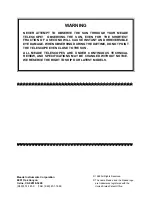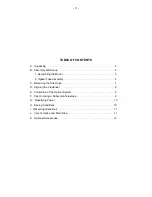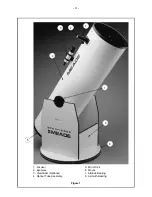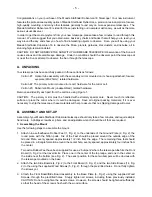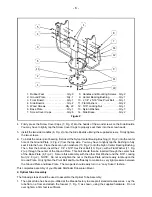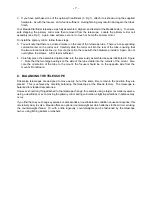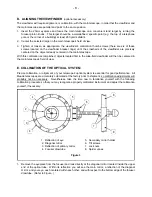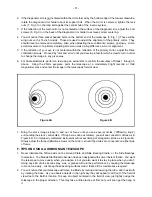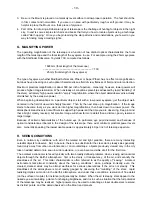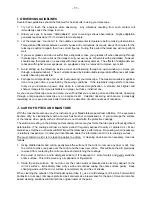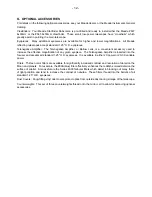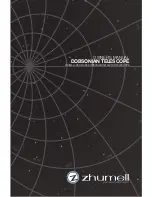
- 10 -
3.
Be sure the Mount is placed on a relatively level surface to allow proper operation. The feet should be
in firm contact and not wobble. If you are in an area with particularly rough or soft ground, it may be
helpful to place the Mount on a thick piece of plywood.
4.
Part of the fun of using a Dobsonian type of telescope is the challenge of hunting for objects in the night
sky. Invest is some simple star charts and books that tell you how to locate objects using a technique
called “star hopping.” Once you begin learning the star patterns and constellations, you’re well on you
way to finding many amazing sights.
G. MAGNIFYING POWER
The operating magnification of the telescope is a function of two distinct optical characteristics: the focal
length of the telescope and the focal length of the eyepiece in use. For example, using the 25mm eyepiece
with the Starfinder Dobsonian 16 yields 73X, computed as follows:
1828mm (focal length of the telescope)
___________________________________ = 73X
25mm (focal length of the eyepiece)
The type of eyepiece, whether Modified Achromatic, Plössl, or Super Plössl, has no effect on magnification,
but does have a bearing on such optical characteristics as field of view, flatness of field, and color correction.
Maximum practical magnification is about 50X per inch of aperture. Generally, however, lower powers will
produce higher image resolution. When unsteady air conditions prevail (as witnessed by rapid “twinkling” of
the stars), extremely high powers result in “empty” magnification, where the object detail observed is actually
diminished by the excessive power.
When beginning observations on a particular object, start with a low power eyepiece; get the object well-
centered in the field of view and sharply focused. Then try the next step up in magnification. If the image
starts to become fuzzy as you work up into higher magnifications, then back down to a lower power: the
atmospheric steadiness is not sufficient to support high powers at the time you are observing. Keep in mind
that a bright, clearly resolved, but smaller, image will show far more detail than a dimmer, poorly resolved,
larger image.
Because of certain characteristics of the human eye (in particular, eye pupil diameter) and because of
optical considerations inherent in the design of the telescope, there exist minimum practical power levels
also. Generally speaking the lowest usable power is approximately 4X per inch of telescope aperture.
H. SEEING CONDITIONS
Even in normal city conditions, with all of the related air and light pollution, there are many interesting
celestial objects to observe. But, to be sure, there is no substitute for the clear, dark, steady skies generally
found only away from urban environments, or on mountaintops: objects previously viewed only in the city
take on added detail or are seen in wider extension, or even become visible at all for the first time.
The amateur astronomer is faced typically with two broadly defined problems when viewing astronomical
objects through the Earth’s atmosphere: first is the clarity, or transparency, of the air, and secondly the
steadiness of the air. This latter characteristic is often referred to as the quality of “seeing.” Amateur
astronomers talk almost constantly about the “seeing conditions,” since, perhaps ironically, even the
clearest, darkest skies may be almost worthless for serious observations if the air is not steady. This
steadiness of the atmosphere is most readily gauged by observing the “twinkling” of the stars: rapid
twinkling implies air motion in the Earth’s atmosphere, and under these conditions, resolution of fine detail
(on the surface of Jupiter, for instance) will generally be limited. When the air is steady, stars appear to the
naked eye as untwinkling points of unchanging brightness, and it is in such a situation that the full potential
of the telescope may be realized: higher powers may be used to advantage, closer double stars resolved
as distinct points, and fine detail observed on the Moon and planets.
Summary of Contents for Starfinder 16
Page 1: ...Meade Instruments Corporation Instruction Manual 16 Meade Starfinder Dobsonian Telescope ...
Page 13: ... 13 NOTES ...
Page 14: ... 14 NOTES ...
Page 15: ......


